Locate nests
How to search for nests?
Hornets search for food within a 2000-meter radius around their nest. On average, they capture 2 prey items per hour. If you spot a hornet searching for food, there’s likely a nest nearby. Follow these 6 tips to find a nest.
Tip 1: Report, Report, Report…
- Not sure if you’ve seen an Asian hornet? Take a photo and report it anyway. You will quickly learn how to distinguish different species on the website.
- If you see hornets in the same location again, make sure to report it. This is valuable information for nest detection and research.
- Can’t take a good photo? Seek assistance from neighbors, friends, or acquaintances.
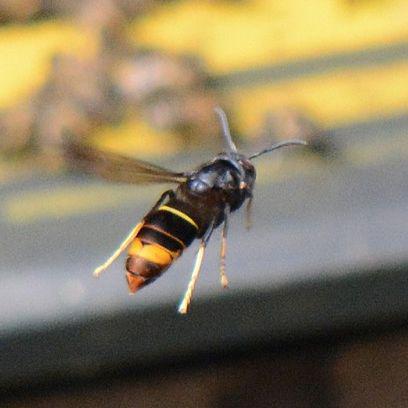
Tip 2: Look for Hornets where you can find them
Hornets are more commonly found in places with many small insects. They also enjoy sugary foods. You’ll find hornets:
- Around beehives.
- Near ripe (fallen) fruit, especially pears and apples, as they are rich in sugars.
- Around plants that bloom in the autumn, such as ivy (Hedera helix) and snowberry (Symphoricarpos).
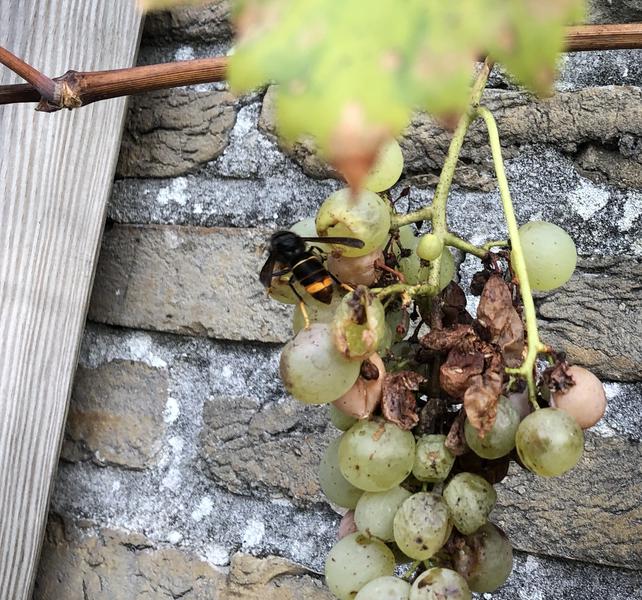
Tip 3: Pay attention to the direction the wasp flies with its prey
Hornets return to the nest with their prey. But be aware, sometimes they make a turn first. Keep following them closely until they are out of sight.
- First, she looks for a suitable branch. This can be in any direction.
- She hangs upside down on the branch to dissect the prey.
- She clamps the meatball between her thorax and legs.
- Only then does she fly back in the direction of the nest.
Hornets often fly at a certain altitude. This allows them to fly at an average speed of 30 kilometers per hour.
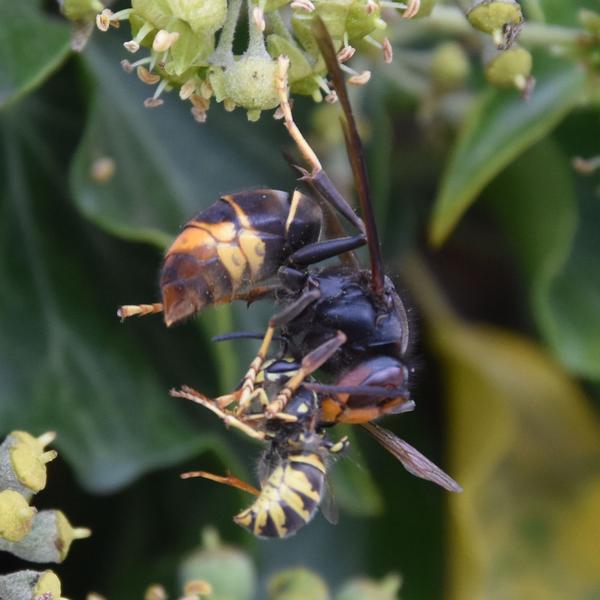
Tip 4: Return to places where the Asian Hornet has been spotted
Hornets like to search for their food in the same places. Beekeepers noticed that the same hornet returned to the same beehives. Every day, for 4 weeks in a row. We have also found hornets that returned to the same ivy bush for 3 weeks. If you want to observe a hornet a bit longer or take a nice photo, go back to the place where you already saw one.
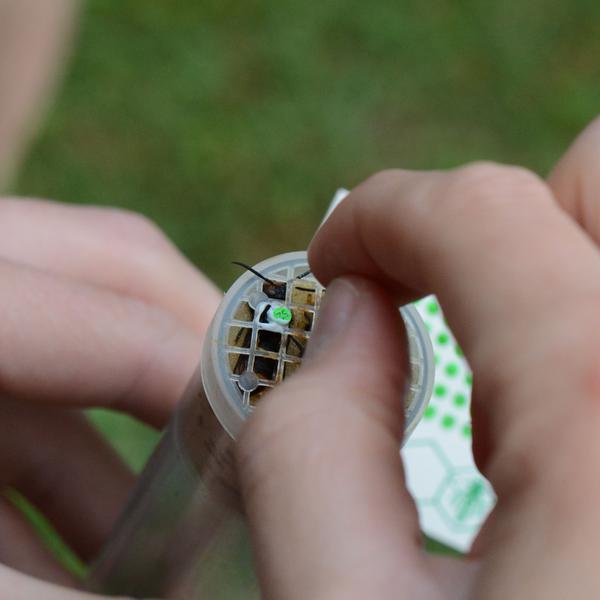
Tip 5: Work together
Finding Asian hornet nests is not simple. Nests in trees are well hidden. An extra pair of eyes can make a difference. The more people are on the lookout, the faster you’ll find the nest!
What can you do?
- Search together in small groups.
- Inform neighbors. Sometimes residents notice ‘large wasps,’ but they don’t think of the Asian hornet.
- Inform local hubs such as beekeepers or the fire department.
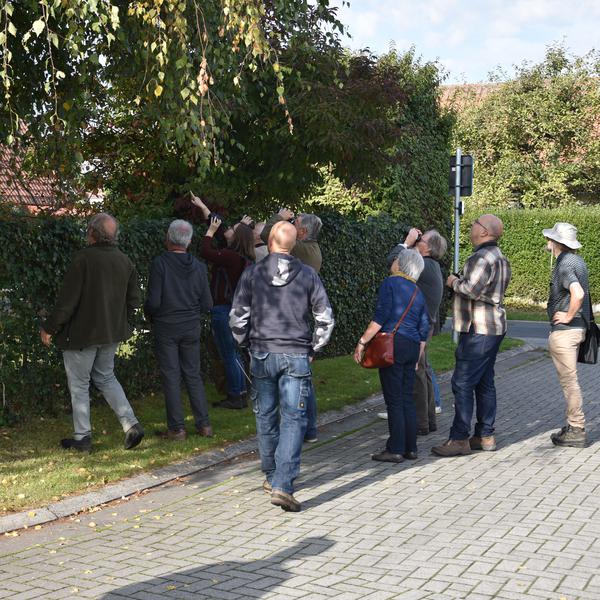
Tip 6: When to search?
- During the day, as the species is only active then: 1 hour after sunrise until 1 hour before sunset. They are most active from noon onwards.
- If you see a hornet at dusk or in the dark, it’s a European hornet.
- Not when it’s raining.
- On a sunny day. They are less active on cloudy, colder days.
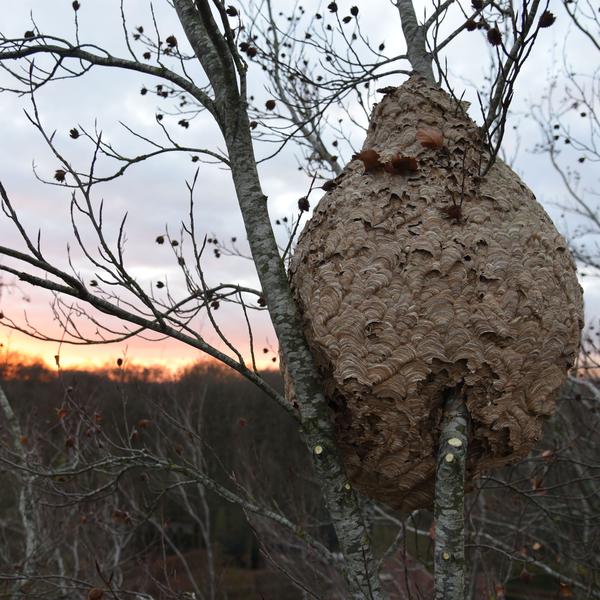
Hang a wick bait stations
In a regular wasp trap, insects drown. Wick bait stations keep the hornets alive. We hang the wick bait stations near a suspected nest and regularly check if they are visited by hornets.
If an Asian hornet visits the wick bait station, you can determine the flight direction to the nest. You can also determine the flight time by marking the hornets. This way, you obtain crucial information about the distance to the nest. With this information, you can locate and treat a nest.
Read this document to know when to use a wick bait station.
Ready to get started? Follow our step-by-step plan.
Step 1: Create a wick bait station and hang it up
What does a good wick bait station look like?
- A glass or plastic jar with a lid.
- Make a hole in the lid for a cotton wick that draws the liquid upward.
- For the liquid, use:
- A specialized product like Trappit from Edialux.
- Or a homemade mixture of equal parts dry white wine, beer, sugar, or sugar syrup.
Where should you hang the wick bait station?
- Just below eye level.
- In an open area, so you can easily recognize and observe the marked hornets as they fly away.
- Place multiple wick bait stations near an Asian hornet sighting. This way, you quickly gather a lot of data.
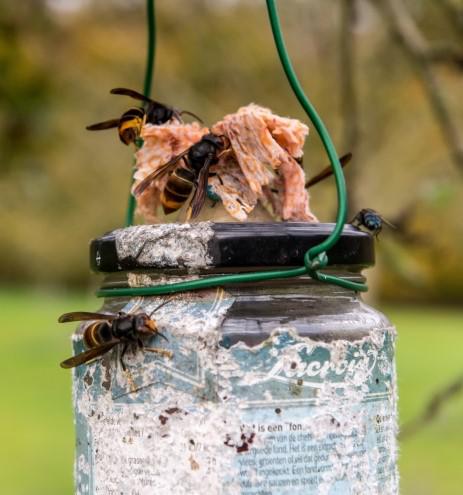
Step 2: Mark the captured Hornet
To ensure you’re observing the same hornet, you need to capture and mark it.
What do you need?
- Use Opalith tags with numbers or a marking pen in different colors.
- A marking tube with a plunger for safe marking.
- These items can be obtained at specialized stores for beekeepers.
How to mark a hornet?
- Use a different marking for each wasp, or use different colors to uniquely mark each hornet.
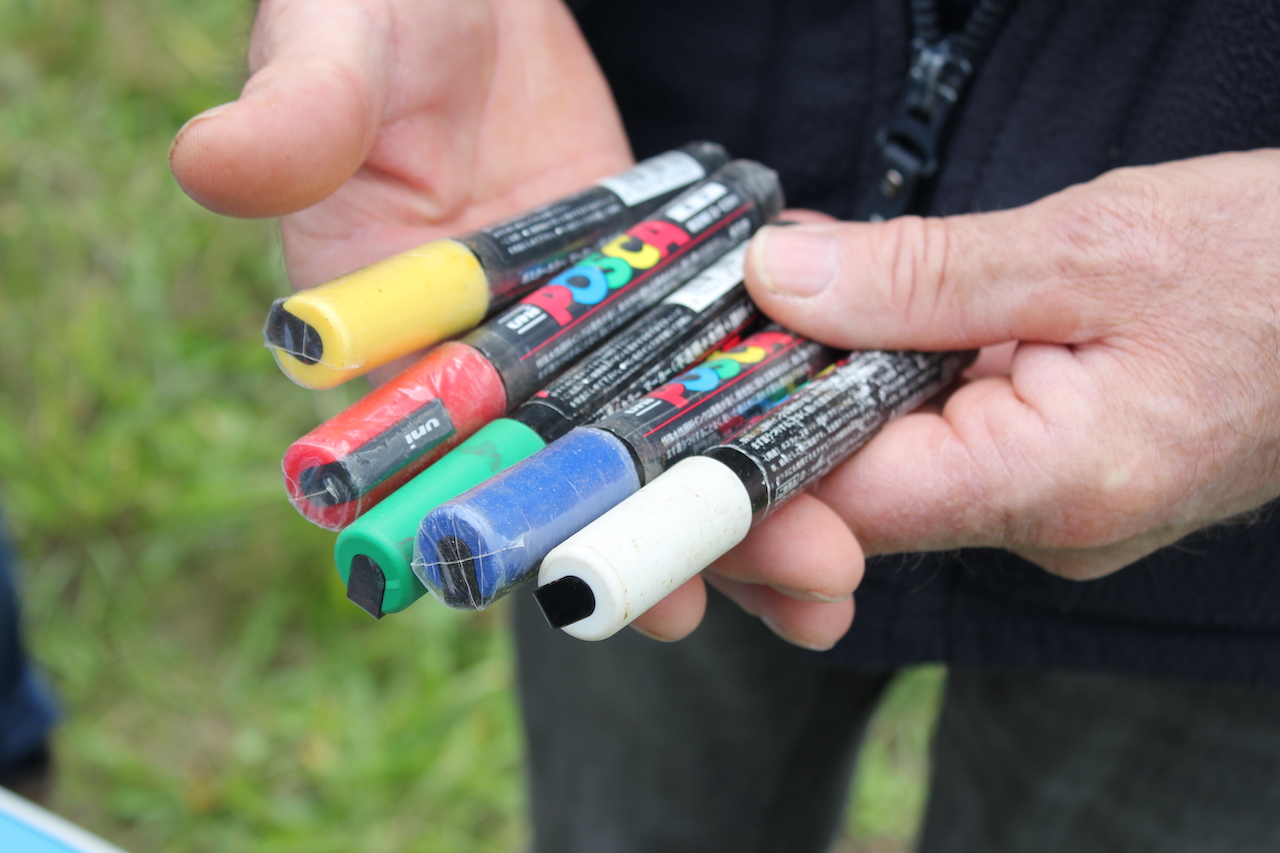
- If a hornet is feeding on the bait, place the marking tube over the wick of the wick bait station. Position the plunger at the opening of the marking tube to capture the hornet.

- Insert the plunger deeper into the marking tube. Secure the hornet with its back against the grid of the marking tube.
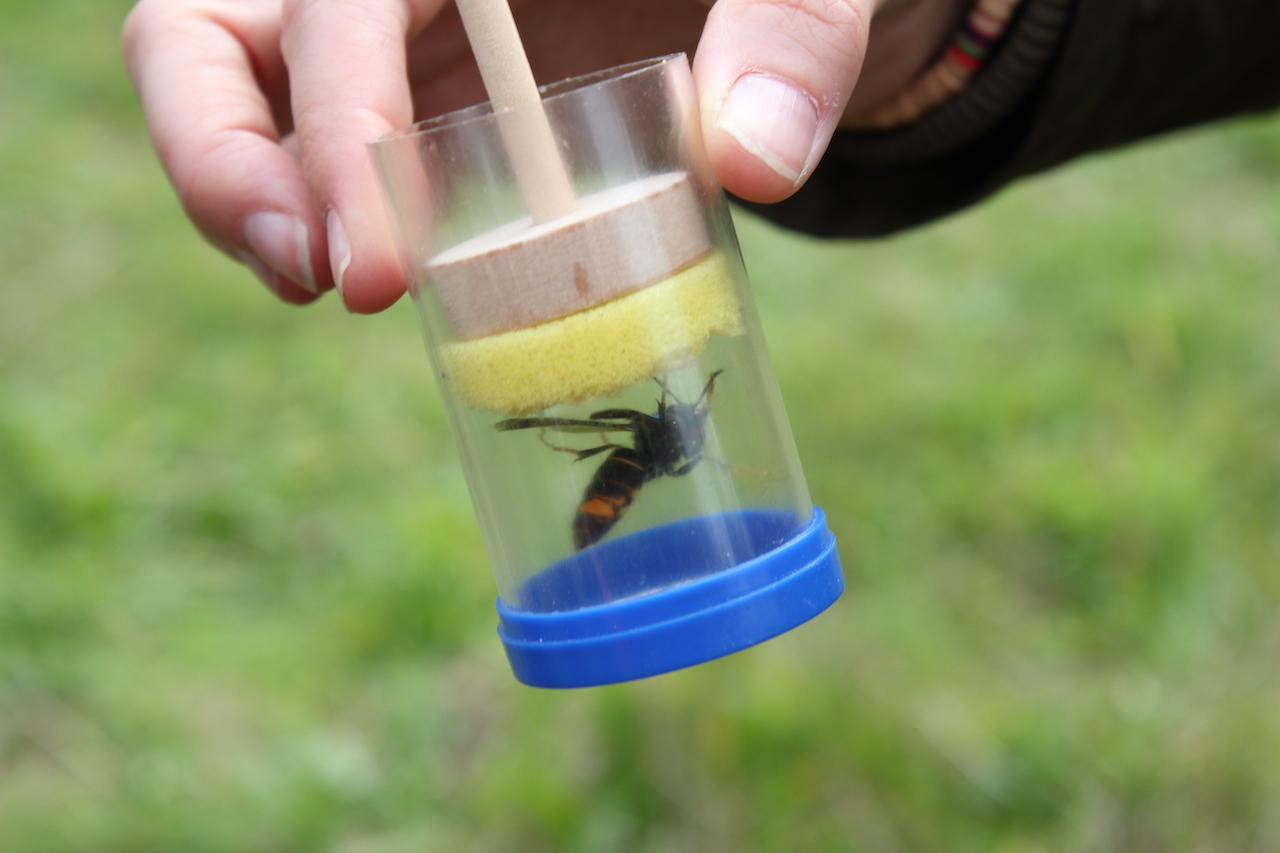
- Attach the Opalith tag with a bit of wood or wax to the top of the thorax, or mark the hornet with a colored pen.
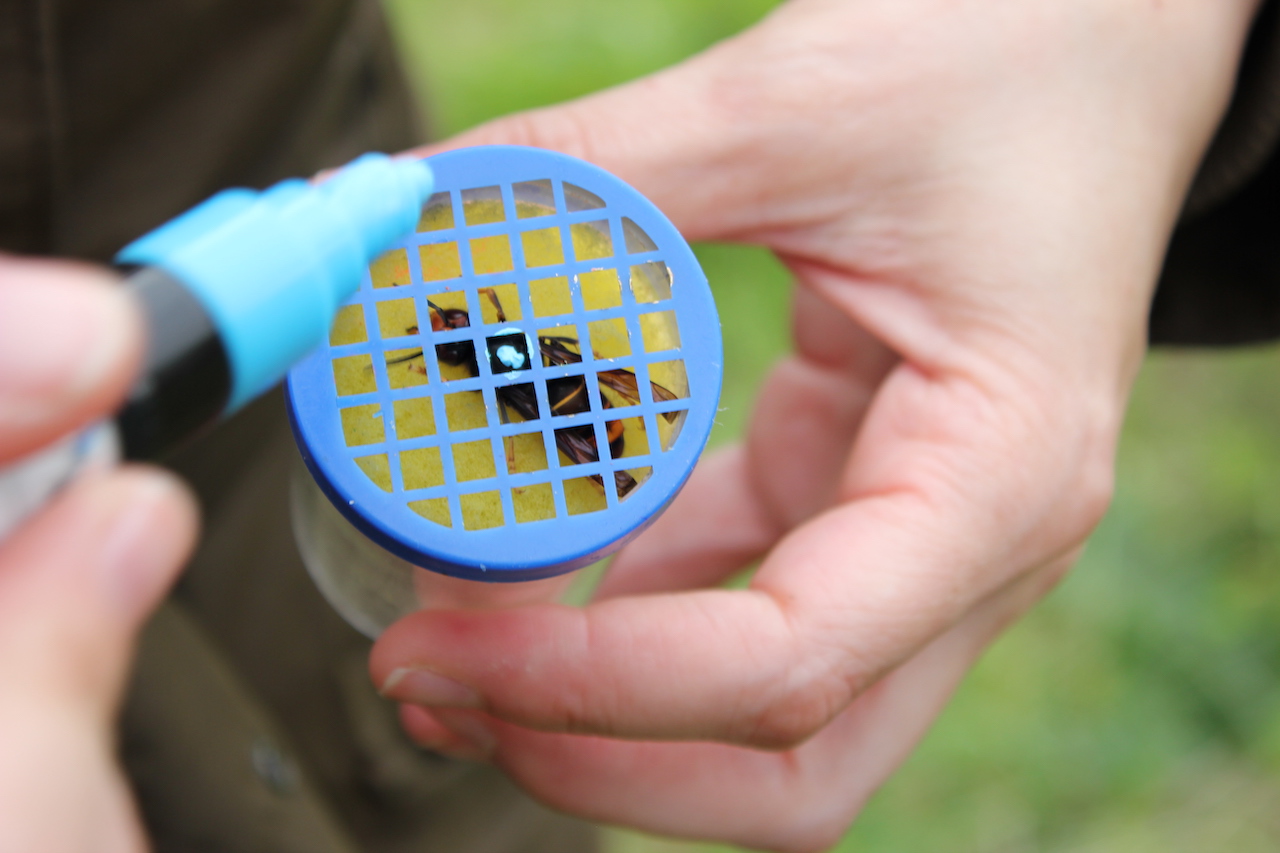
- Allow the hornet to sit in the marking tube for a minute. This allows the glue or wax to dry. You no longer need to hold the hornet tightly. Move the plunger and give the hornet more space in the marking tube.
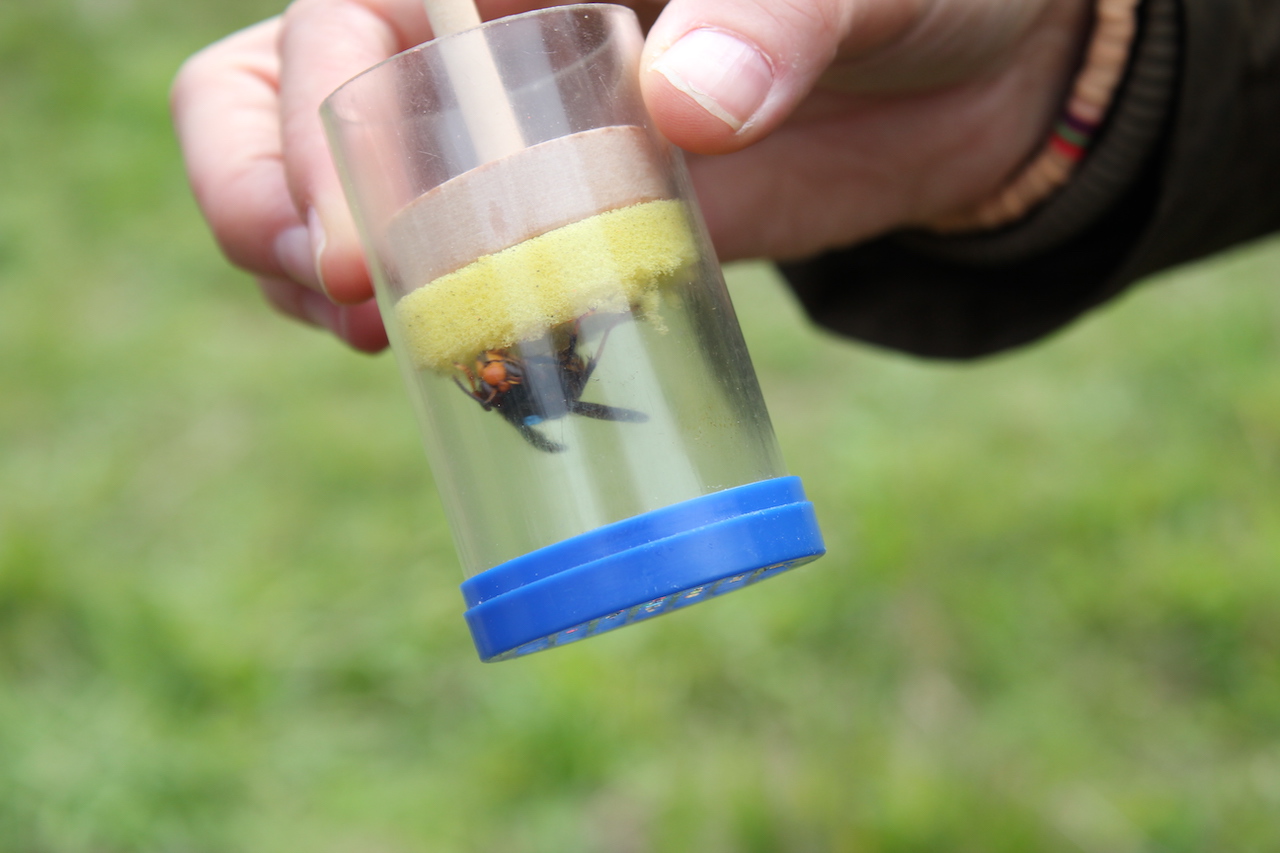
- Release the hornet. It usually takes some time for the hornet to return to the wick bait station.
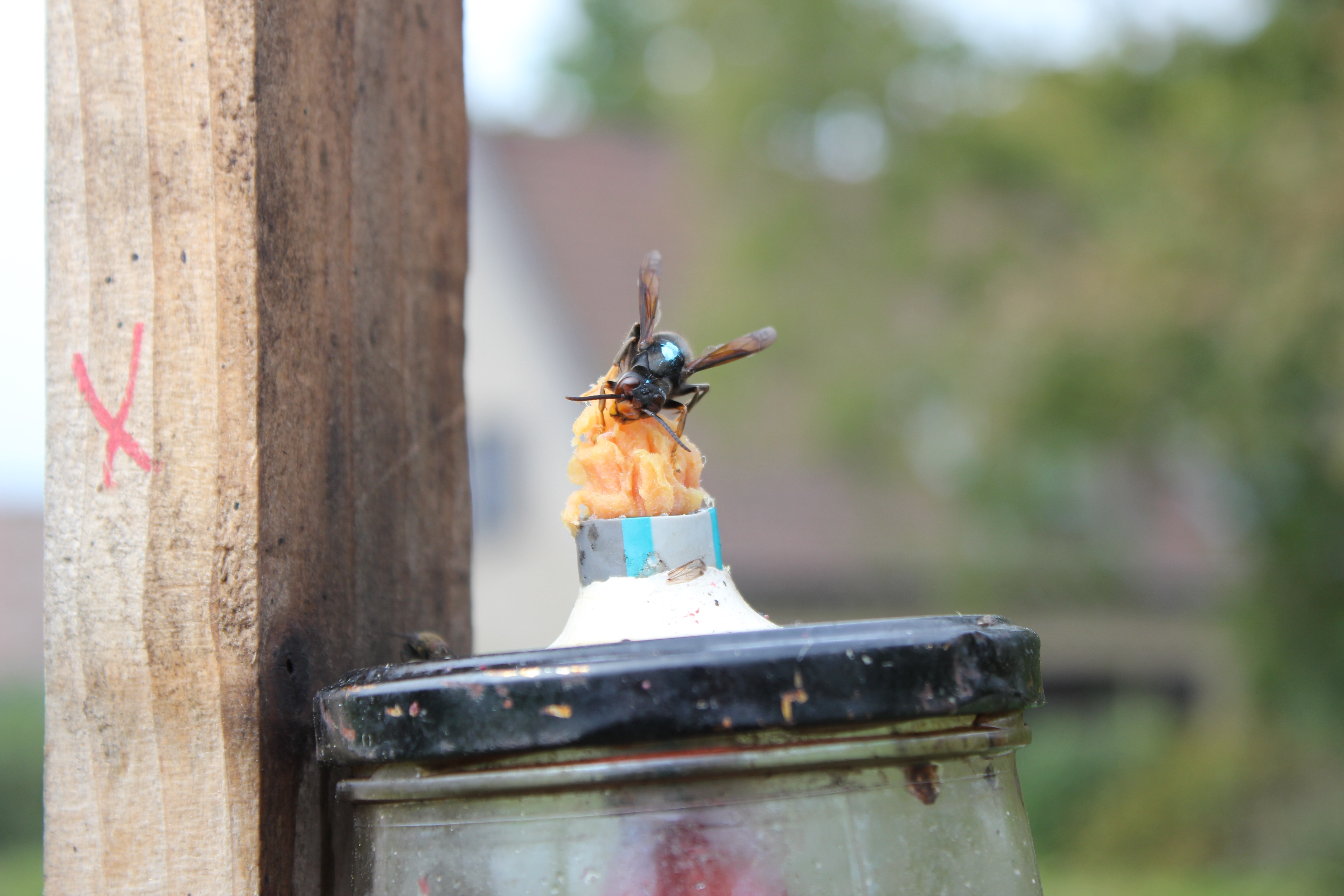
Step 3: Record the times and flight directions
You’ve marked a hornet?
- From now on, note:
- The direction it flies in after visiting the wick bait station.
- How long it stays away between two visits to the wick bait station.
- Measure the time between two visits at least 5 times. Use the shortest time to calculate the nest’s location. Calculate 1 minute as 100 meters from the nest.
The flight direction of a hornet may not always be the same. This is because the hornet doesn’t always fly in a straight line to her nest. She uses the landscape to orient herself, for example, a tall tree or a house.
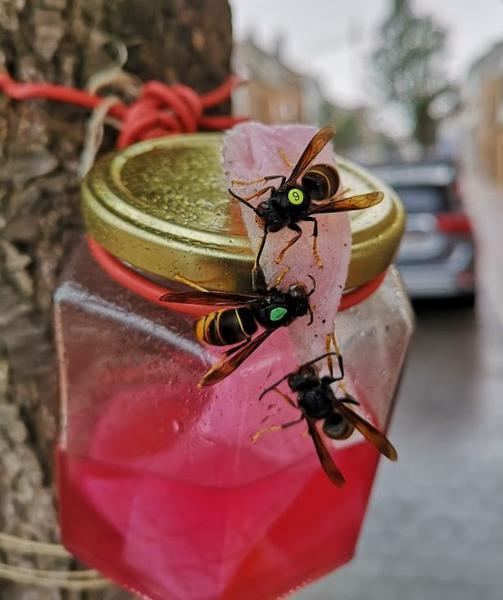
Step 4: Plot the flight directions and times on a map
- Print a map of the area with a clear scale or use an online web application like Google’s My Maps.
- Draw a line to indicate the flight direction of the wasp.
- The line starts at the location where the wick bait station is hanging.
- Calculate the shortest observed flight time to the nest. A wasp flies at 100 meters per minute. The shortest flight time determines the length of the line.
This will give you a clear overview of the search area. The more information you have, the smaller the potential area where the nest might be located. Typically, a nest is no more than 2 km away from an observation.
To plot flight directions and locations of wick bait stations, you can use the Hornet Tracker, a tool developed by Vespawatchers for Vespawatchers, powered by Telenet.
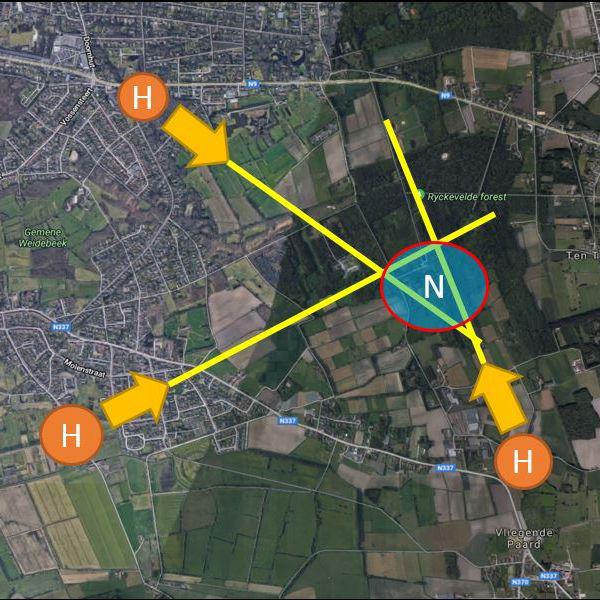
Interesting website for nest hunters
Want to get started with tracking to find a nest yourself?
Use this guide (Dutch) for transmitting Asian horned nests.